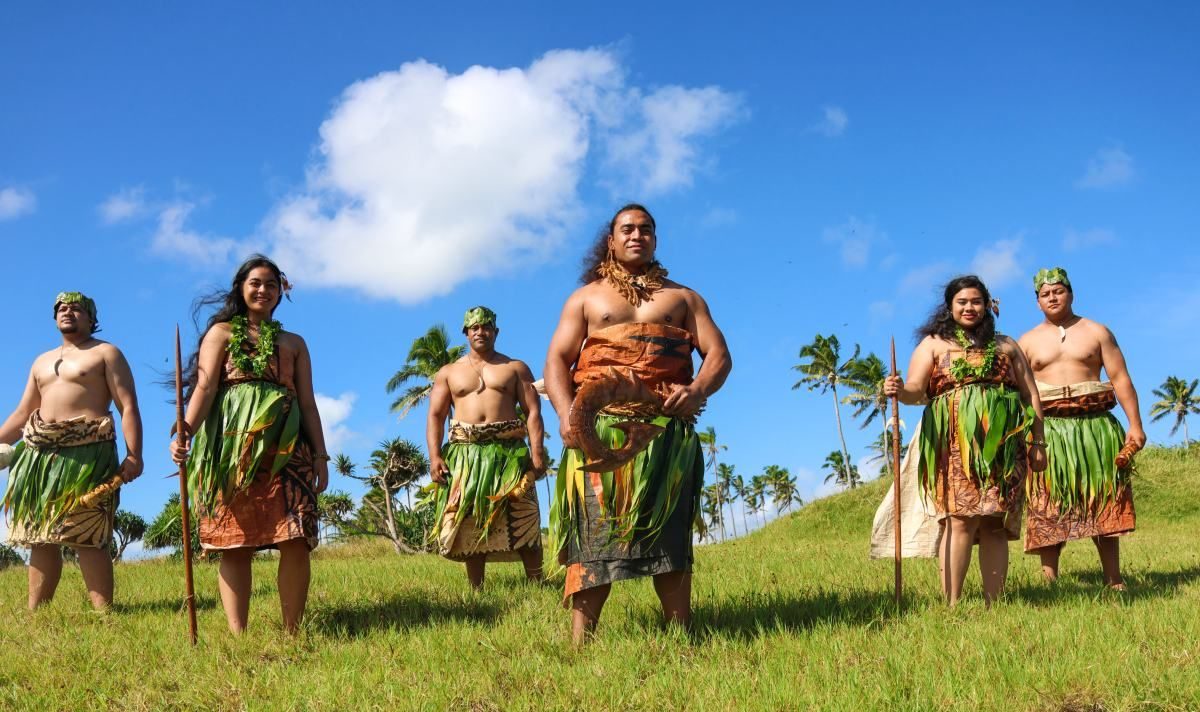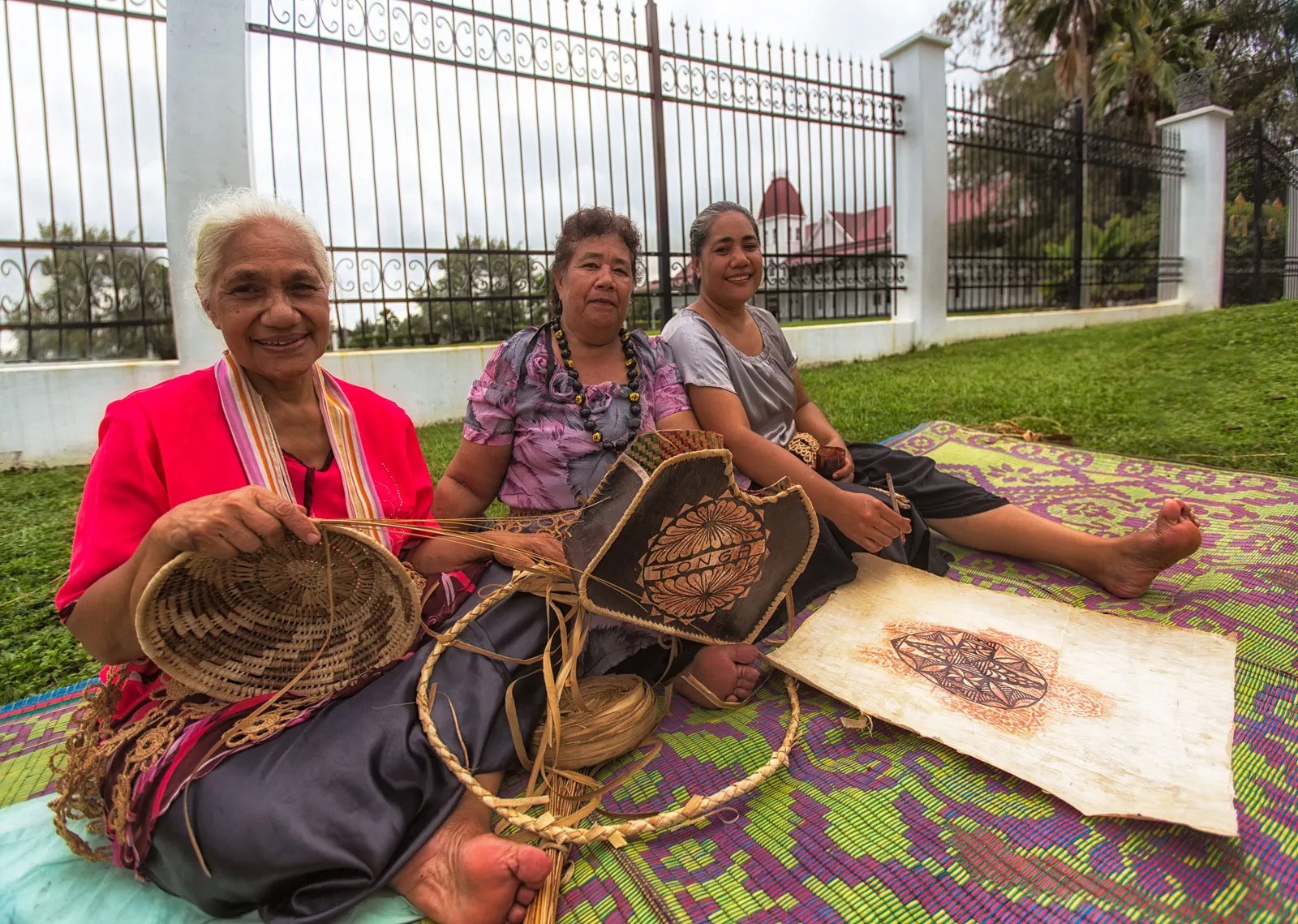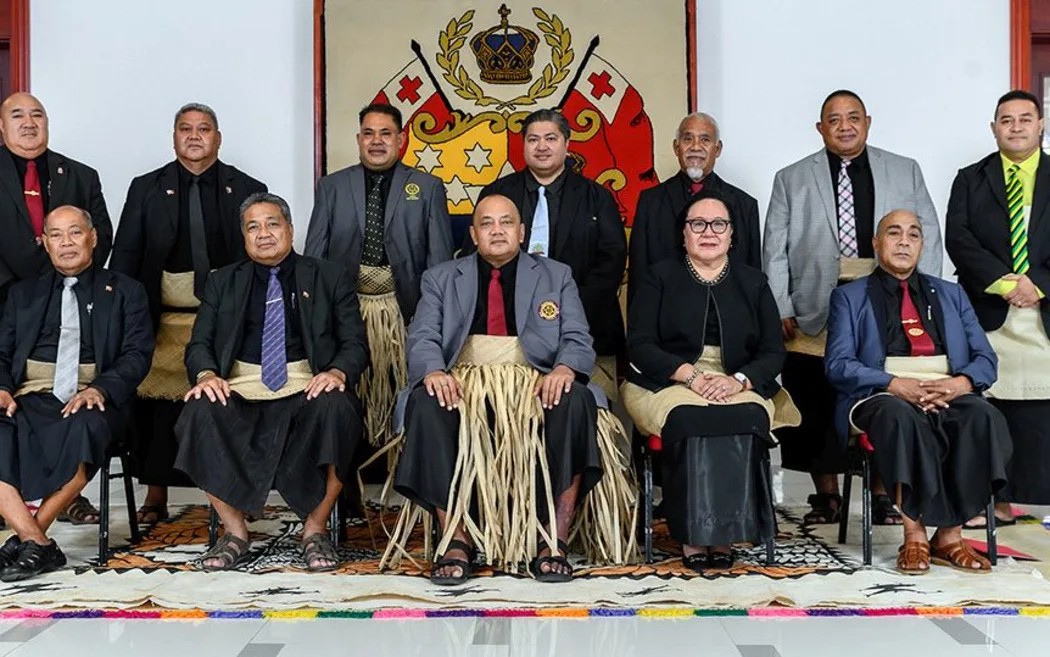The Kingdom Of Tonga - South Pacific’s Spectacular Secret
Tonga, a beautiful island nation in the Pacific Ocean, attracts visitors with its stunning beaches, lush landscapes and welcoming locals, which makes tourists keep coming back year after year.
Author:Sophia HarperReviewer:Liam JonesMay 26, 202545.3K Shares647.3K Views
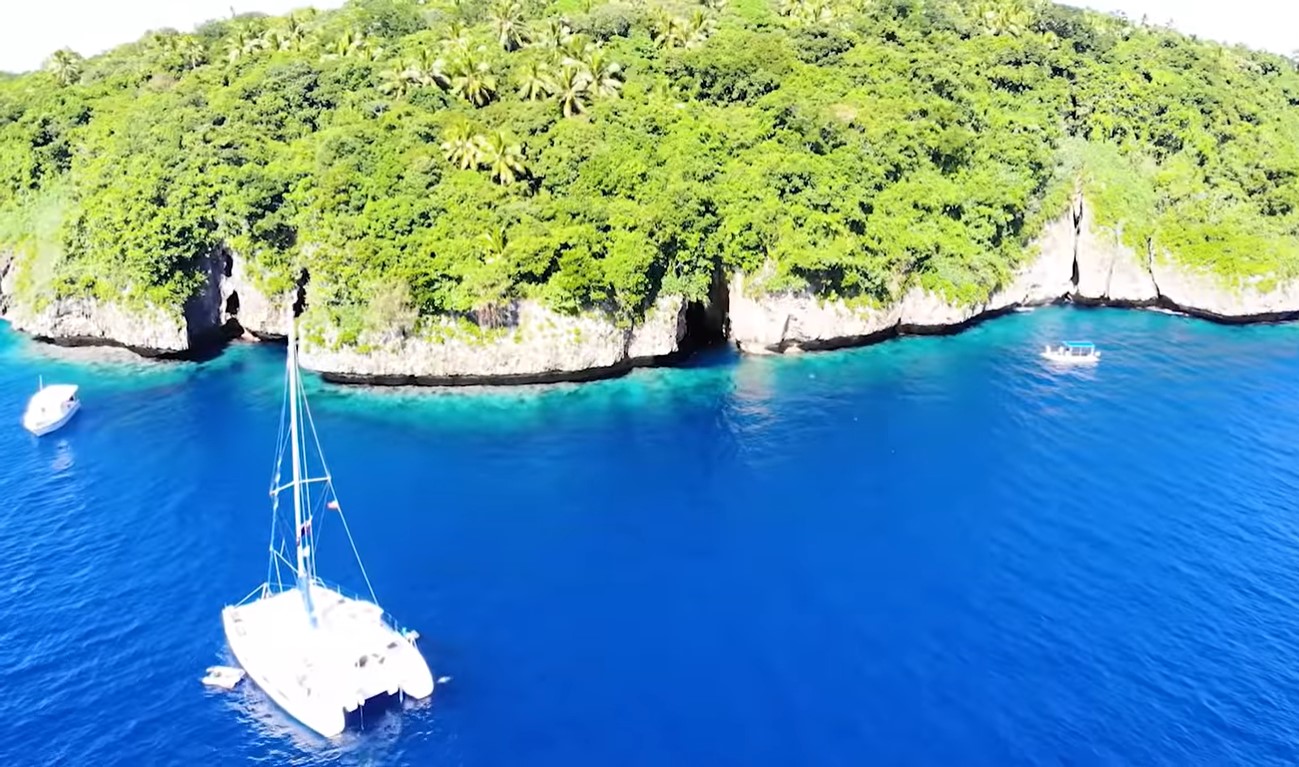
Tonga, also known as the Kingdom of Tonga, is a beautiful Polynesian country in the South Pacific. Its people are famous for their kindness, which earned the nation the nickname “Friendly Islands” from British explorer Captain James Cook in the 1700s.
The country includes 171 islands, with 45 inhabited, each offering unique landscapes from coral atolls to volcanic peaks and cultural traditions. Visitors are drawn to its peaceful coral reefs, dramatic volcanoes, and the warmth of its people. This overview highlights Tonga’s geography, history and culture, making it a perfect destination for travelers and a fascinating place to explore.
Geography Of Tonga
Tonga is a collection of islands in the South Pacific, spread across a vast ocean area but with a small total land size. The three main island groups are Tongatapu , Ha'apai , and Vava’u . Tongatapu, the largest island, holds the capital city, Nuku’alofa, and is home to most of Tonga’s people.
Vava’u, to the north, has dramatic limestone cliffs and harbors, making it popular for sailing. Ha’apai, farther south, charms visitors with quiet lagoons and colorful coral reefs perfect for snorkeling. Most Tongans live on Tongatapu, while the other islands are less crowded.
Geological Diversity
Tonga’s islands are shaped by two forces: volcanoes and coral. Western islands, like Tofua and Kao, are volcanic, with rich soil for farming. Eastern islands, such as Tongatapu and Vava’u, are built from coral and limestone, creating caves and reefs. The 2022 eruption of Hunga Tonga-Hunga Ha’apai highlighted the power of Tonga’s active volcanoes.
Tonga also has two seasons: a hot, rainy season (December–May) with storms, and a cooler, dry season (June–November). Rainfall varies northern islands get more rain, while southern areas like Tongatapu stay drier. Farmers rely on the wet season, but tourists often prefer the dry months for better weather.
Tonga’s Unique Wildlife
Tonga’s isolation has created unique species. The tongan whistler, a bright yellow-and-black bird, and the flightless Tongan megapode (known for giant eggs) are found nowhere else. Coral reefs teem with marine life, and flying foxes glide through forests. But deforestation, overfishing, and climate change threaten these treasures. Protecting them is key to preserving Tonga’s natural beauty.
History Of Tonga
Tonga’s story begins over 3,000 years ago with the Lapita people, skilled seafarers and artists who settled the islands around 1500 BCE. Their arrival laid the foundation for a vibrant culture that would grow into one of the Pacific’s most influential societies.
By the 10th century CE, the Tu’i Tonga Empire rose as a powerful maritime kingdom. Ruled by leaders seen as divine, it stretched across much of the South Pacific, connecting islands through trade, marriage, and shared traditions. Though the empire faded by the 15th century, its legacy of unity and cultural pride remains central to Tongan identity.
Europeans first arrived in 1616, but Captain James Cook’s visits in the 1770s left a lasting mark. He named the islands the “Friendly Islands,” though relations were more complex than they seemed. These early encounters highlight how outsiders often misunderstood Pacific cultures.
In the 1800s, Tonga transformed under King George Tupou I, who united the islands and created a constitutional monarchy in 1875. This blend of traditional leadership and Western-style governance helped preserve Tonga’s independence during a time of colonial expansion.
When Tonga became a British protectorate in 1900, it uniquely kept its sovereignty, never fully colonized. Britain handled foreign affairs, but Tonga’s kings and queens maintained control at home, a rare feat in the Pacific. Full independence came in 1970 and Tonga joined the Commonwealth, balancing its global connections with cultural traditions.
Tongan Language And Religion
Tonga is a bilingual country where both Tongan and English are official languages. Most people grow up speaking Tongan, a Polynesian language deeply tied to tradition and daily life. English is commonly used in schools, government offices, and tourist areas, making it easier for Tonga to connect with the rest of the world. This blend of languages helps preserve the nation’s cultural roots while embracing modern opportunities.
Tongan's central religion is Christianity, with nearly everyone belonging to a Christian church. The wesleyan methodist churchis the most common, and its teachings shape how people live, work, and interact. Sundays are deeply sacred businesses close, and activities like sports or chores are paused to honor worship and rest. This tradition began in the 1820s when Wesleyan missionaries arrived, and their influence remains a cornerstone of Tongan identity.
Tongan's Social Norms
Tongan life revolves around family, respect, and community. The idea of faka’apa’apa (respect) guides how people behave, from honoring elders to following traditions. Families (kainga ) are tight-knit, often living and working together, with everyone sharing responsibilities. Guests are treated with warmth and care, and elders are shown reverence like sitting lower than them as a sign of humility. These customs create strong, supportive communities where everyone looks out for one another.
The fahu system is a unique part of Tongan family structure, traditionally giving women especially the eldest sister significant influence and respect. Sisters often held decision-making power, sometimes outranking their brothers. While modern Tonga faces gender stereotypes shaped by tradition and religion, the fahu system highlights a historical legacy of female leadership within families.
Culture And Tradition
The kava ceremony is a cherished ritual in Tonga. Made from the kava plant’s root, the drink is shared during special events to strengthen friendships and unity. Men usually lead the ceremony, guided by the family elder (ulumotua ), while participants follow strict rituals. Guests show respect by accepting the kava with both hands and sipping slowly. This tradition connects modern Tongans to their ancestors and reinforces values of respect and togetherness.
Tongan women take pride in creating beautiful tapa cloth (ngatu ) and woven mats. Tapa is made by beating tree bark into cloth, then painting it with patterns that tell stories or celebrate culture. Woven mats, often used in ceremonies or as heirlooms, feature intricate designs passed down through generations.
In Tonga, music and dance are more than entertainment, they’re vibrant ways to share stories, emotions, and history. Traditional dances like lakalaka and ma’ulu’ulu act as living stories, using movement and rhythm to recount tales of ancient warriors, myths, or daily life. Every gesture and beat carries meaning, passing down knowledge and values from elders to younger generations.
Togan Economy
Agriculture is the heart of Tonga’s economy, with crops like squash, coconuts, and vanilla driving exports. Fishing also sustains local diets and trade. These sectors form the foundation of Tonga’s income and food security.
Money sent back home by Tongans working abroad plays a huge role in the country’s economy. Families in Tonga rely heavily on these funds, which make up nearly half of the nation’s GDP. Most of this support comes from Tongans living in the U.S., New Zealand, and Australia, showing how closely connected families stay despite the distance.
Beyond farming, fishing, and tourism, other industries contribute to Tonga’s growth. Small-scale manufacturing focuses on items like concrete, furniture, clothing, and local crafts. Meanwhile, service industries like businesses, government services, and community programs make up almost half of the economy.
When it comes to trade, Tonga’s biggest partners are nearby nations like New Zealand, Fiji, Australia, and the U.S., as well as Singapore. These countries provide most of the goods Tonga imports, from food to machinery. On the flip side, Tonga exports agricultural products and seafood mainly to New Zealand, Japan, Australia, and the U.S.
Tonga Tourism Industry
Tonga’s tourism industry is blossoming, driven by its breathtaking landscapes, vibrant culture, and warm hospitality. By applying proven strategies of how tourism marketing works, the government is prioritizing growth through improved online services, attracting investment and adapting to climate impacts.
Visitors to Tonga can explore a variety of unique destinations. The main island of Tongatapu blends history and nature, featuring ancient landmarks like the Haʻamonga ʻa Maui trilithon and the powerful Mapuʻa ʻa Vaca blowholes, where waves surge through volcanic rock. Vava’u, with its dramatic limestone cliffs and sheltered harbors, is a paradise for sailors and whale watchers. Ha’apai offers pristine lagoons and coral reefs perfect for snorkeling, while ‘Eua’s lush rainforests and limestone caves cater to adventurers.
Among Tonga’s standout experiences are its world-class whale watching and diving opportunities. Between June and November, humpback whales migrate to Vava’u’s waters, allowing visitors to swim alongside these majestic creatures. Ha’apai’s untouched reefs and shipwrecks create an underwater wonderland for divers. Fishing charters and sailing tours further highlight the islands’ marine beauty, making these activities central to Tonga’s appeal.
The kingdom is also rich in cultural and natural landmarks. Tongatapu’s ancient ruins and Vava’u’s coastal caves, like the famed Swallows Cave, offer glimpses into Tonga’s history and geology. The Mapuʻa ʻa Vaca blowholes provide a dramatic display of nature’s power, drawing visitors eager to witness the spectacle.
Government And Politics In Tonga
Tonga’s government blends ancient traditions with modern democracy, creating a unique system where a constitutional monarchycoexists with a parliamentary structure. Reforms since 2010 have gradually shifted power toward an elected parliament, which now supports the Prime Minister, though the monarch retains significant influence. This balance reflects Tonga’s dedication to preserving its royal heritage while embracing democratic principles.
The king or queen holds key powers, such as vetoing laws, dissolving parliament, and appointing judges. Meanwhile, the Fale Alea (Parliament) includes 26 members: 17 elected by citizens and 9 chosen by nobles. This setup ensures traditional leadership remains part of governance, even as elected representatives shape policies.
In early 2025, ʻAisake Eke took office as Prime Minister after Siaosi Sovaleni’s resignation in late 2024. With a general election expected by November 2025, Tonga’s political scene remains dynamic, as leaders navigate the nation’s evolving priorities.
Internationally, Tonga engages actively with global partners like the United Nations, the Commonwealth, and countries such as the U.S., Australia, and New Zealand. The U.S. embassy established in Nuku'alofa in 2023 strengthened bilateral ties, while China has become a major creditor and development partner.
Tongan Flavors
Tongan cuisine revolves around fresh, local ingredients sourced from the land and sea. Root vegetables like taro (talo ), yams (ufi ), and cassava (manioke ) are staples, providing energy for daily life. The surrounding ocean supplies abundant seafood ,tuna, snapper, octopus (feke ), and shellfish while tropical fruits like bananas and mangoes add sweetness to meals. These ingredients are often prepared simply, highlighting their natural flavors.
Cooking in Tonga is deeply tied to tradition. The umu , an underground oven, is central to celebrations and family gatherings. Stones heated in a pit steam food wrapped in banana leaves, infusing dishes like pork, fish, or root vegetables with earthy richness. Other methods include grilling fish over open flames, fermenting kava or fruits, and preparing raw dishes like ota ika, a zesty mix of marinated raw fish, coconut cream, tomatoes, and chili.
Signature dishes showcase Tonga’s culinary creativity. Ota ika refreshes with its citrusy kick, while lu pulu combines corned beef, onions, and coconut cream in taro leaves for a hearty meal. Sweet treats like faikakai dumplings served with coconut sauce highlight the love for bold, comforting flavors. Grilled octopus or squid simmered in coconut broth (lo’i feke ) rounds out the island’s rich food culture.
Beyond the kitchen, Tonga’s environment shapes its identity. The islands host unique species like the Tongan whistler, a black-and-yellow bird found nowhere else, and the Tongan megapode, a flightless bird known for its massive eggs. Native forests thrive with trees like Diospyros and Alphitonia , while staghorn ferns carpet the forest floor.
Yet Tonga faces challenges. Deforestation, invasive species like rats and feral pigs, and climate change threaten its ecosystems. Rising seas and stronger cyclones endanger coastal communities and coral reefs, while soil salinization impacts farming. To combat this, Tonga is turning to solar energy and conservation projects, like removing invasive species from islands such as Kelefesia to protect nesting birds and turtles.
Locals are also learning biosecurity practices to preserve their environment. Through food and conservation, Tonga balances tradition with resilience, ensuring its culture and natural beauty endure for generations.
You Might Also Like: How To Explore Spain's Culinary Delights
FAQs About Tonga
Where Is Tonga’s Currency Used?
Tonga’s money, called the pa’anga (or Tongan dollar), is managed by the National Reserve Bank of Tonga (Pangike Pule Fakafonua ’o Tonga ) in the capital city, Nuku’alofa.
Is Tonga Part Of Australia?
Tonga is not an Australian country. It is a Polynesian nation located south of Samoa, southeast of Fiji, and northeast of New Zealand. While it shares the Pacific Ocean with Australia, Tonga remains a distinct, independent nation with its own unique culture and history.
Do I Need A Visa For Tonga?
You’ll need a passport valid for at least six months and a return or onward ticket. If your stay exceeds 31 days, a visa is required. While many nationalities can enter visa-free for shorter trips, always verify specific entry requirements based on your citizenship before planning your journey.
What Are The 3 Closest Countries To Tonga?
Tonga is far from most other countries, but its nearest neighbors are Fiji, Samoa, and Vanuatu. It’s also special because it has always been governed by its own people and has never lost its independence.
Is Tonga An African Country?
Tonga is a country located in the South Pacific, east of Australia, and north of New Zealand. It is part of the region known as Oceania, being situated east of Fiji, south of Samoa, and west of the Cook Islands.
What’s The Current Official Name Of Tonga?
Tonga is officially known as the Kingdom of Tonga.
Final Words
Tonga, known as the Friendly Islands, mixes ancient Polynesian traditions with stunning natural beauty and a strong community spirit. From the colorful sea creatures around Vava’u’s reefs to the rich history of Nuku’alofa, this Pacific nation offers unforgettable experiences for travelers and learners alike.
While Tonga faces modern challenges like climate change and building a stronger economy, its people stay rooted in their traditions and warmth. Visitors are drawn to its adventurous landscapes, deep history, and vibrant culture, all wrapped in a charm that feels timeless. If you’re exploring coral reefs, learning about royal heritage, or sharing a meal with locals, Tonga’s unique spirit leaves a lasting impression.
Also Check Out: Caribbean Destinations For Spring Season

Sophia Harper
Author
Sophia Harper’s photography acts as a portal to the soul of the places she visits. Drawn to South America’s landscapes and cultures, she has spent years capturing everything from the majesty of ancient ruins to the vibrancy of urban streets.
Sophia’s work isn’t just about documenting moments; it’s about evoking the emotions and stories behind them. A dedicated photographer, she has worked with local communities across South America to capture their rich cultural narratives through her lens.
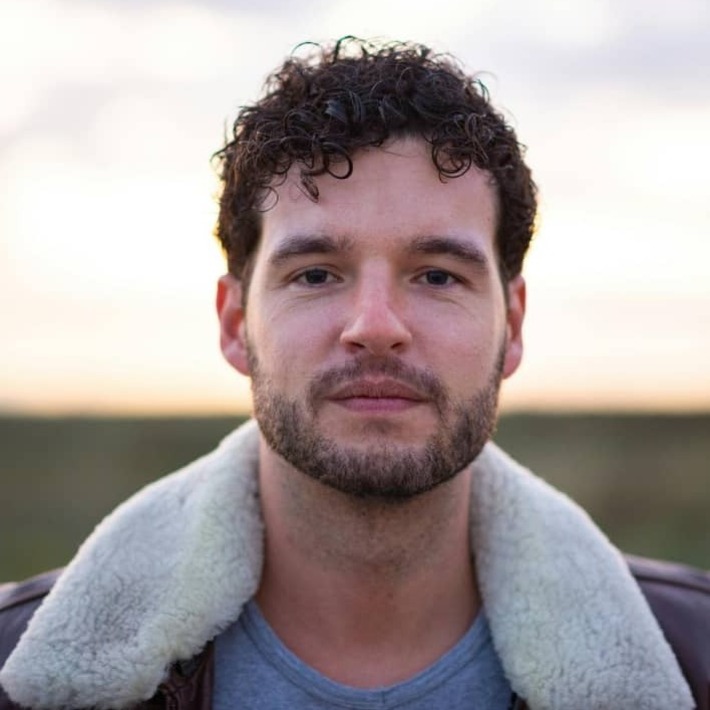
Liam Jones
Reviewer
Liam Jones has made it his mission to prove that adventure doesn’t need a hefty budget. Having traveled to over 40 countries, he specializes in finding affordable ways to experience the world, from the best street food in Bangkok to hidden gems in Lisbon.
Liam’s travel tips have reached thousands of readers, empowering them to see the world on a shoestring budget without sacrificing quality. With a deep passion for local cultures, he continues to share his travel hacks, ensuring adventure remains accessible to all.
Latest Articles
Popular Articles






